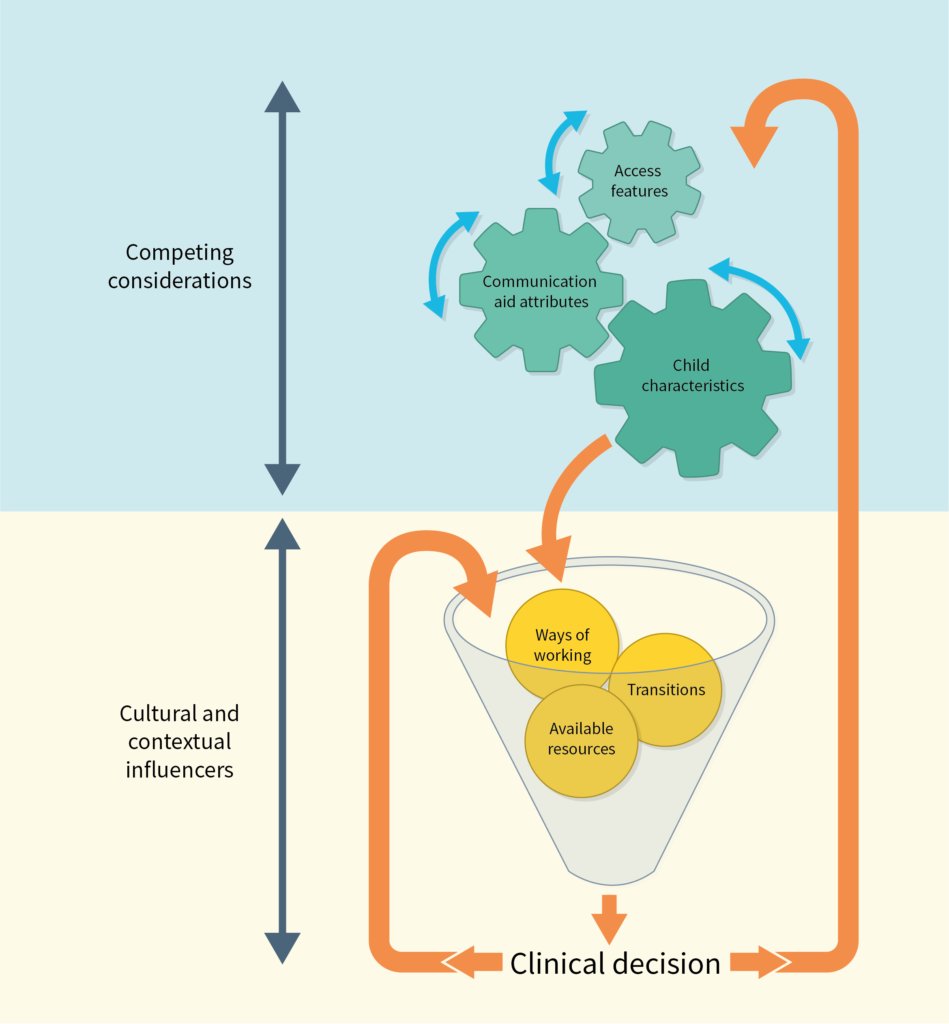I-ASC Explanatory Model of AAC decision making
The I-ASC explanatory model of factors to consider when making symbol communication aid recommendations for children.
Overview
The findings from the I-ASC study highlight that aid recommendations arise from a complex and individualised process. This UK-evidence based process includes consideration of how competing yet interlinked permutations of the characteristics of the child, access features, and aid attributes need interrogation to support the identification of the most appropriate aid for each child. Furthermore, I-ASC evidence suggests that key to these decisions are the influences of cultural work practices, contexts of the service provision and the child’s communication environments. To illustrate this complex and dynamic interplay of competing considerations and influencers, an I-ASC Explanatory Model was developed from the research findings (see Figure 1).

The top half of the model illustrates the competing considerations of child characteristics, communication aid attributes and access features as three interlinked cogwheels. As possible decisions are debated in one cog, they may cause a shift and movement in the other cogs changing the availability of the most preferred aid recommendation options. The cogwheel motion signifies the fluidity of decision making and the competing constraints necessitating identification of the best-fit options, rather than always the most preferred options.
Child characteristics form the biggest cog as each child brings a unique set of characteristics. Despite medical and therapeutic diagnoses implying distinct clusters of child characteristics, the reality for children and young people who benefit from AAC systems is a diverse and heterogeneous range of abilities and challenges within individual profiles that include aspects of their sensory, cognitive, language, learning and physical traits. The I-ASC child characteristics list attests to the elements that emerged across the different aspects of the research.
Communication Aid Attributes form the second cog. This cog describes a set of features within existing technology that is limited by the general attributes of the communication aid, components of software and organisational qualities of vocabulary packages.
Access features form the third cog. This cog represents the prominence given to access features in the I-ASC data and the degree of consideration given to these features in the clinical decision making process. It is also separate as it represents the interaction interface between child and communication aid and the deliberations needed to make this interface work as effectively as possible. The I-ASC access features list was generated during different aspects of the research.
Readers of the I-ASC heuristic are encouraged to consider the detail of the I-ASC explanatory model to aid their decision making. The heuristic components of the model are detailed below. They are not presented in any order of priority, as each element will be prioritised according to each child being considered for a symbol communication aid recommendation. We offer these details to support your problem solving and decision deliberations.